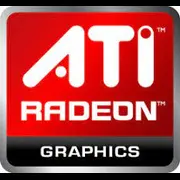ATI Radeon HD 5870 Eyefinity 6

ATI Radeon HD 5870 Eyefinity 6: The Legend of Multi-Monitor Systems and Its Legacy
Introduction
Released in 2009, the ATI Radeon HD 5870 Eyefinity 6 was a revolutionary graphics card that set new standards for multi-display configurations. Despite its age, it still piques the interest of enthusiasts and collectors. In this article, we will explore its architecture, performance, and relevance in 2023.
1. Architecture and Key Features
TeraScale 2 Architecture
The HD 5870 is built on the TeraScale 2 architecture (codename Cypress), utilizing a 40nm manufacturing process. This allowed for the placement of 2.15 billion transistors and 1600 stream processors. The core clock speed is 850 MHz, which was impressive for 2009.
Unique Features
The main feature of this model is the Eyefinity 6 technology, allowing the connection of up to six monitors via six mini-DisplayPort connectors. This made the card indispensable for trading, simulation, and panoramic gaming enthusiasts.
Support for DirectX 11 and OpenGL 3.2 ensured compatibility with contemporary games at the time. There were no equivalents to DLSS or ray tracing then, but AMD offered ATI Stream for parallel computing, a predecessor to OpenCL.
2. Memory: Speed and Impact on Performance
GDDR5 and Bandwidth
The card was equipped with 1 GB of GDDR5 memory with a 256-bit bus. The effective clock speed was 4800 MHz, with a bandwidth of 153.6 GB/s. For the years 2009–2012, this was sufficient for gaming at a resolution of 1920×1200, but today, 1 GB is critically low, even for indie projects.
Limitations in Modern Conditions
The memory capacity is only adequate for older games or basic tasks. For example, in Skyrim (2011), the card produced 50–60 FPS on ultra settings, but in Cyberpunk 2077 (2023), even on low settings, the FPS drops to 10–15 due to insufficient VRAM.
3. Gaming Performance
Examples from 2009–2012
- Crysis Warhead (1920×1200, Very High): 35–40 FPS.
- Battlefield: Bad Company 2 (1920×1200, Ultra): 50–60 FPS.
- The Witcher 2 (1680×1050, High): 30–35 FPS.
Modern Titles
In 2023, the HD 5870 is a relic. In CS:GO (1024×768, Low), you can expect 60–80 FPS, while in Fortnite (720p, Low), around 25–30 FPS. Support for resolutions above 1080p is absent, but through Eyefinity, a virtual display of 5760×1080 (3 monitors) can be assembled for atmospheric racing in Need for Speed: Most Wanted (2012).
Ray Tracing
RTX and FidelityFX technologies are unavailable for this card. Modern APIs like Vulkan or DirectX 12 are also not supported.
4. Professional Tasks
Video Editing and 3D Modeling
In 2009, the HD 5870 was used for rendering in Adobe Premiere Pro CS4 via OpenCL, but today its capabilities are insufficient even for work in Blender. Modern AMD drivers are not optimized for newer software versions.
Scientific Calculations
The card supports OpenCL 1.0, which allows its use in simple calculations, but its energy efficiency is lower than that of modern solutions. For instance, rendering in Folding@Home will be slow and unreasonably energy-intensive.
5. Power Consumption and Heat Output
TDP and Power Supply Requirements
The TDP of the HD 5870 is 188 W. For stable operation, a 500 W power supply with two 6-pin PCIe connectors is required.
Cooling and Case Recommendations
The stock cooling system (a turbine with a heatsink) managed the load, but under high load, the fan could reach 40–45 dB. For comfortable use today, cases with good ventilation (for example, Cooler Master HAF 912) and replacing thermal paste are recommended.
6. Comparison with Competitors
NVIDIA GeForce GTX 480
The main competitor of 2010. The GTX 480 (480 CUDA cores, 1.5 GB GDDR5) outperformed the HD 5870 in performance in DirectX 11 benchmarks (for instance, Metro 2033), but fell short in energy efficiency (TDP 250 W) and noise levels.
AMD Radeon HD 6870
A newer model from 2010. The HD 6870 (1120 stream processors) lagged behind the HD 5870 in performance but consumed less power (TDP 151 W).
In 2023
Comparing the HD 5870 to modern GPUs is meaningless. Even budget models like the NVIDIA GTX 1650 (4 GB GDDR6) are 3–4 times faster.
7. Practical Advice
Power Supply
At least 500 W with an 80+ Bronze certification. Examples: Corsair CX550M or EVGA 500 BQ.
Platform Compatibility
The card uses a PCIe 2.0 x16 interface, which is compatible with modern motherboards. However, on systems with PCIe 4.0, there may be a slight performance loss (1–3%).
Drivers
Official support from AMD has been discontinued. The last drivers are Catalyst 15.7.1 for Windows 7/8.1. On Windows 10/11, conflicts may arise, but enthusiasts use modified drivers.
8. Pros and Cons
Pros
- Unique support for six monitors via Eyefinity.
- Good energy efficiency for its time.
- Legendary status and collectible value.
Cons
- Outdated architecture: no support for DirectX 12, Vulkan.
- Only 1 GB of video memory.
- Lack of modern technologies (DLSS, FSR, RTX).
9. Final Conclusion
The ATI Radeon HD 5870 Eyefinity 6 is suitable for:
- Collectors and enthusiasts building retro PCs.
- Users who need a multi-monitor system for work (trading, graphics).
- Fans of old games on original 2000s hardware.
Why Not to Buy It in 2023?
For modern games and professional tasks, the card is useless. Even budget models like the AMD Radeon RX 6400 (price: $130–150) offer 5–7 times better performance and support for current technologies.
Price
At the time of release, the HD 5870 Eyefinity 6 was priced at $380–450. Today it can be found on the secondary market for $30–50, but purchasing it should only be for nostalgia or specific tasks.
Conclusion
The Radeon HD 5870 Eyefinity 6 is a monument to an era when AMD challenged NVIDIA with innovations like multi-display systems. But time spares no legend: today, it is more of an artifact than a practical tool.
Basic
Memory Specifications
Theoretical Performance
Miscellaneous
Benchmarks
Compared to Other GPU
Share in social media
Or Link To Us
<a href="https://cputronic.com/gpu/ati-radeon-hd-5870-eyefinity-6" target="_blank">ATI Radeon HD 5870 Eyefinity 6</a>